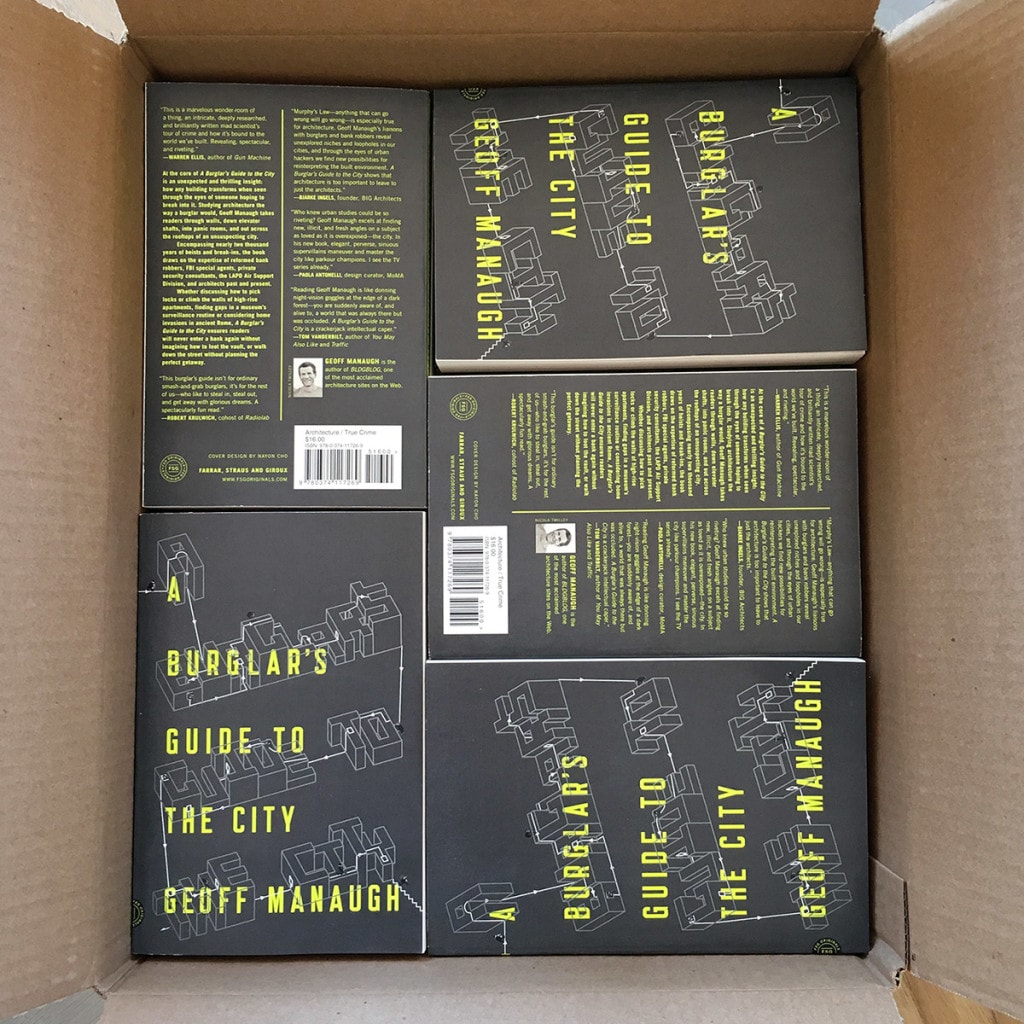The Burglar's Guide Has Arrived
At long last, after more than three years of research and travel, A Burglar’s Guide to the City is finally shipping.

It is a book about crime, policing, and the built environment, and how these forces mutually influence one another, from ancient Rome to contemporary Los Angeles, with a specific focus on the spatial peculiarities of breaking and entering.
I’ve already posted about the book at some length here on the blog—with many more posts available under the Burglar’s Guide tag—and there is also a standalone website worth checking out, as well, with links to reviews, book tour information, and some great blurbs.
However, for now, especially if this is the first you’ve heard of it, consider checking out an excerpt from the book over at The New York Times Magazine, an author profile over at the Wall Street Journal, a short segment about burglary and Los Angeles on NPR’s Marketplace, or a great review published in the Los Angeles Times.
There, Annalee Newitz writes that, “Despite its title, Geoff Manaugh’s A Burglar’s Guide to the City won't teach you how to break into houses. It won’t help you outsmart wily cat burglars with ingenious home alarm systems, either. Instead, it explores something a lot weirder and more interesting: Manaugh argues that burglary is built into the fabric of cities and is an inevitable outgrowth of having architecture in the first place.”
Writing for the Barnes & Noble Review, meanwhile, Sarah Weinman—editor of the recent collection Women Crime Writers: Eight Suspense Novels of the 1940s and 1950s—said that, after reading the book, “my worldview is altered a little bit more, and far for the better, as a result.” Patrick Lyons at VICE found the book “an exhilarating, perspective-shifting read,” and the BBC recommended it as one of their “Ten books to read in April,” calling it “a surprising and fascinating true-crime epic.”
Most fun of all was doing an interview with Gastropod—a podcast about food, science, and history cohosted by my wife, Nicola Twilley, and journalist Cynthia Graber—discussing food heists, potato bombs, fast-food burglaries, and much more.
Amazon chose A Burglar’s Guide as one of their “Best Books of April 2016,” adding that it is a “caper of a book.” *Update: I also got to speak about the book with Curbed for their recently launched podcast, on “why panic rooms are going to outlast the pyramids.”
In any case, I’d be over the moon if you picked up a copy, and I would love to discuss the book’s many ideas—and people and tools and scenes and histories—in more detail here. However, I’m also aware that I can’t just post about this book over and over—and over—again, so I’ll also get back to regular blogging soon.
Thanks! And enjoy the book.

It is a book about crime, policing, and the built environment, and how these forces mutually influence one another, from ancient Rome to contemporary Los Angeles, with a specific focus on the spatial peculiarities of breaking and entering.
I’ve already posted about the book at some length here on the blog—with many more posts available under the Burglar’s Guide tag—and there is also a standalone website worth checking out, as well, with links to reviews, book tour information, and some great blurbs.
However, for now, especially if this is the first you’ve heard of it, consider checking out an excerpt from the book over at The New York Times Magazine, an author profile over at the Wall Street Journal, a short segment about burglary and Los Angeles on NPR’s Marketplace, or a great review published in the Los Angeles Times.
There, Annalee Newitz writes that, “Despite its title, Geoff Manaugh’s A Burglar’s Guide to the City won't teach you how to break into houses. It won’t help you outsmart wily cat burglars with ingenious home alarm systems, either. Instead, it explores something a lot weirder and more interesting: Manaugh argues that burglary is built into the fabric of cities and is an inevitable outgrowth of having architecture in the first place.”
Writing for the Barnes & Noble Review, meanwhile, Sarah Weinman—editor of the recent collection Women Crime Writers: Eight Suspense Novels of the 1940s and 1950s—said that, after reading the book, “my worldview is altered a little bit more, and far for the better, as a result.” Patrick Lyons at VICE found the book “an exhilarating, perspective-shifting read,” and the BBC recommended it as one of their “Ten books to read in April,” calling it “a surprising and fascinating true-crime epic.”
Most fun of all was doing an interview with Gastropod—a podcast about food, science, and history cohosted by my wife, Nicola Twilley, and journalist Cynthia Graber—discussing food heists, potato bombs, fast-food burglaries, and much more.
Amazon chose A Burglar’s Guide as one of their “Best Books of April 2016,” adding that it is a “caper of a book.” *Update: I also got to speak about the book with Curbed for their recently launched podcast, on “why panic rooms are going to outlast the pyramids.”
In any case, I’d be over the moon if you picked up a copy, and I would love to discuss the book’s many ideas—and people and tools and scenes and histories—in more detail here. However, I’m also aware that I can’t just post about this book over and over—and over—again, so I’ll also get back to regular blogging soon.
Thanks! And enjoy the book.





Comments are moderated.
If it's not spam, it will appear here shortly!
Post a Comment